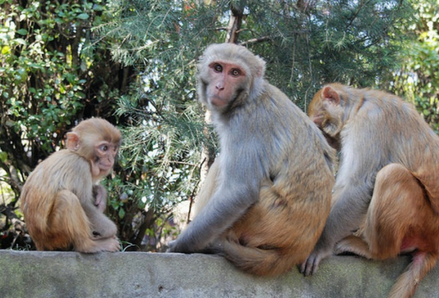


Seeing animals and wildlife can be a memorable and educational experience, but it also comes with risks to both you and the animals involved.
Wherever you travel, it’s important to act responsibly if you encounter an animal, whether it’s a wild animal or domesticated animal you are unfamiliar with. There are ways to observe animals humanely and safely, without putting the health of the animal or yourself at risk.

Animals can be a huge draw for tourists. Seeing an elephant, tiger, or koala bear up close can be a once in a lifetime opportunity and it’s no wonder that many people jump at the chance. However, to generate these experiences, animals may be subject to cruel and unethical treatment. It can be difficult for travellers visiting a new place to know how to observe animals humanely, but taking the time to learn about the animals, services and conservation efforts under way can help you make choices that put animal welfare first.
Here are a few key things to consider and look out for:
In addition to ethical and safety issues that can arise when tourists encounter animals, there can also be risks to their health and yours. More than half of all infections people can get can be spread by animals. These are known as zoonotic diseases. There are over 200 known zoonotic diseases including Ebola, salmonellosis, influenza, COVID-19, and rabies. These infections can be transmitted through direct contact such as a bite or scratch, a vector such as a mosquito or tick, or through food, water, or the environment.
Understanding the risks and knowing how to prevent them can keep you safe:
One of the most deadly zoonoses is rabies, but it’s also 100% preventable. Travellers who have contact with wild or domestic animals are at risk.
Rabies is a viral infection spread through direct contact with an infected animal’s saliva. The virus is most often transmitted through scratches and bites, but transmission can also occur when saliva enters through an open wound or a mucus membrane. The virus attacks the Central Nervous System targeting the brain and the spinal cord, and if untreated, is fatal.
The virus that causes rabies is present on all continents except Antarctica. Rabies is an old disease – it’s been known since 2000 BC – but it remains a significant and complicated public health issue in many countries today.
Most human rabies infections occur in Asia and Africa, and are caused by dog bites. Many mammals like bats, monkeys, skunks, foxes, raccoons, coyotes, and wolves can also transmit rabies, and is a risk for travellers planning outdoor activities.
Avoid risks, prevent rabies
Luckily, there are many precautions you can take when it comes to preventing rabies. Avoid contact with any animal, including feeding or petting monkeys at temple sites.
If you are bitten or scratched, clean the wound with soap and water thoroughly as soon as possible then pour an antiseptic. Seek medical attention immediately.
Keeping your distance from animals may not be realistic on ecotourism trips, or if you’re planning activities like cave exploring, camping, trekking, and visiting farms. Moreover, rabies can also be an occupational hazard for veterinarians and wildlife researchers. In these cases, your health provider or travel clinic may recommend that you get the pre-exposure rabies vaccine series.
Rabies is an especially significant risk to children who are more likely to play with animals. The WHO reports that 40% of people who are bitten by suspected rabid animals are under 15 years of age. Children should be cautioned not to pet animals and to report scratches or bites to an adult immediately. Emphasize that they should not be scared or ashamed to report a bite or scratch.
Vaccination and HRIG
If you get the three pre-exposure vaccine series (given over 3 or 4 weeks in Canada and USA), it provides adequate initial protection, but you will require 2 additional post-exposure doses if you are exposed to rabies. The pre-exposure series simplifies medical care if you have been bitten by a rabid animal and gives you enough time to travel back from a remote area to seek medical attention.
According the Canadian and US protocols, if you do not have the pre-exposure shots, you will need rabies immunoglobulin (RIG) plus 4-5 rabies vaccine shots, depending on your health status. RIG is in short supply worldwide, so having the pre-exposure rabies vaccine series is critical if you are in areas where HRIG is not available. If you had the rabies pre-exposure shots, you do not need RIG.
Note that in remote communities with poor healthcare, post-exposure vaccination and RIG may not be available or may be beyond the financial reach of local medical facilities. RIG is very expensive to produce in large quantities. As a result, production can’t keep up with the worldwide demand, especially in resource-limited countries, making it a neglected tropical disease.
Last reviewed and updated: December 11, 2020.
Image by Tullia Marcolongo